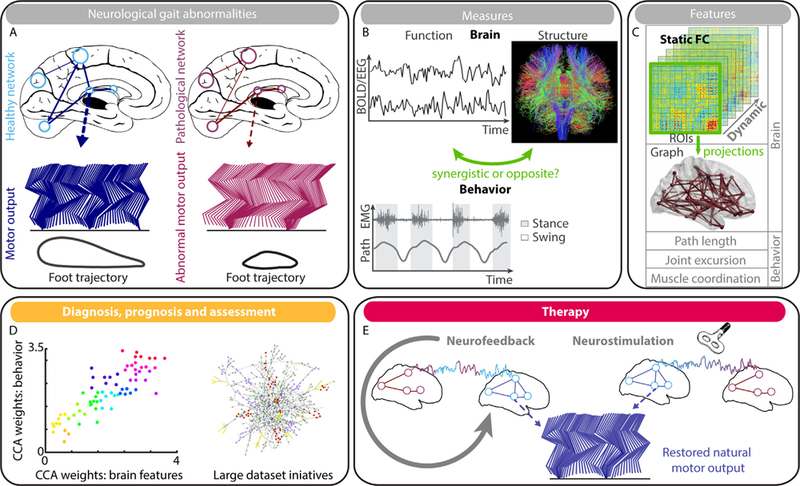Figure 1.

Schematic representation of the contribution of advanced neuroimaging techniques for ‘‘decoding’’ brain substrates of gait disorders and their treatment. A. Disrupted distributed brain networks reflect on neurological gait abnormalities. B. The neural alterations can be captured through both functional and structural modalities; while gait disorders can be characterized by kinetic and kinematic observations. Yet it remains to be elucidated whether anatomo-functional abnormalities operate synergistically or in opposition in the generation of pathological walking. C. Despite this open question, several features can be extracted from neural observations and exploited as biomarkers. However, because correlation between parcels exhibits meaningful temporal variations, brain networks dynamics has to be kept in consideration. The spatiotemporal elements can be captured by graph signal processing techniques, which require projection of the brain activity over the structural backbone, or via first- and second-order statistics, which encode the dynamics directly from voxel- or region-wise signal measures. D. Because of the multifaceted nature of gait and the underlying numerous brain structures, the identified features should be related through multivariate correlation methods, such as canonical correlation analysis (CCA), for a more complete characterization of the pathology and its stage. However, these multivariate techniques require ‘‘large enough datasets’’ for proper validation. E. Finally, the identified brain features and their dynamics should not only inform rehabilitative-decision processes, but also be deployed to directly drive the therapy. For instance, close-loop neurofeedback training can impose neuroregulation of the networks dynamics instead of single brain region; while neurostimulation parameters can be optimized by considering the impact of regional stimulation over dynamical brain networks. The efficacy of these therapies would still require proper assessment via the identified imaging biomarkers.
